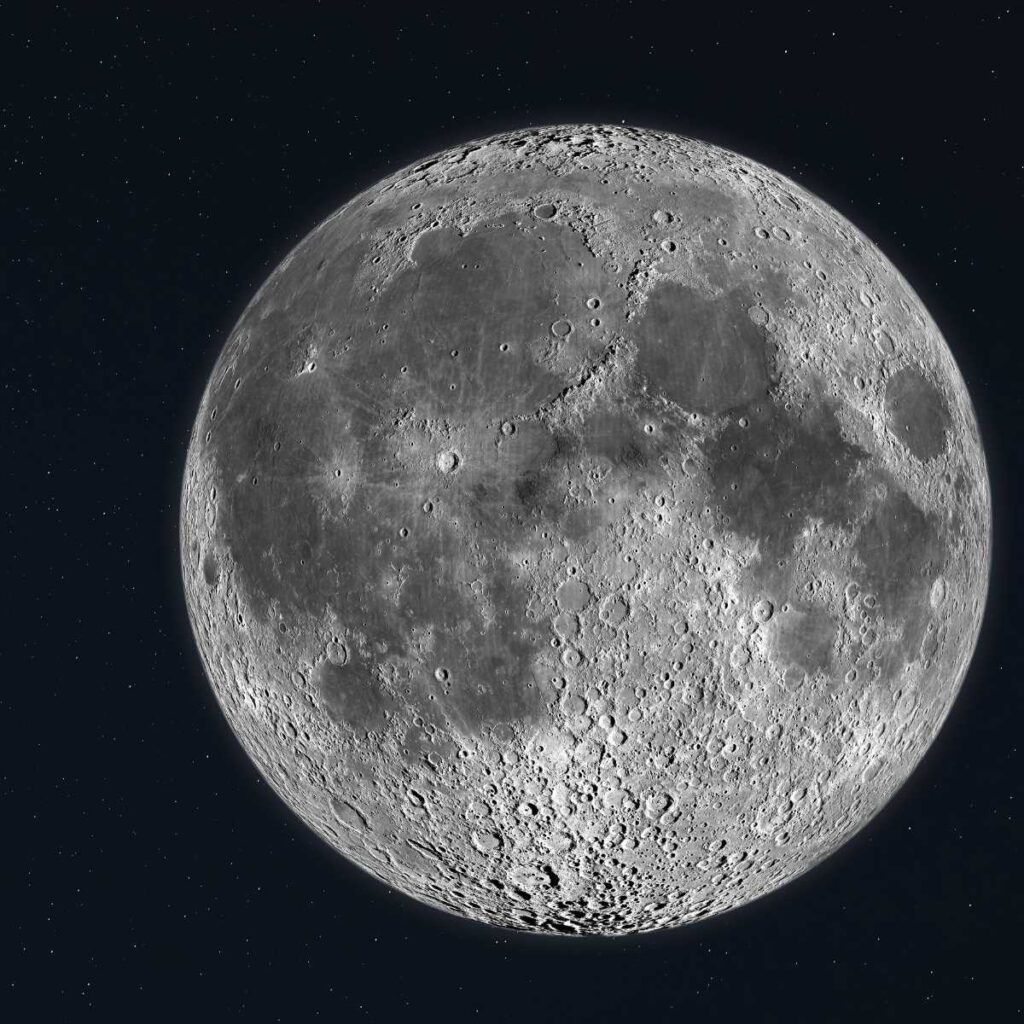Last Reviewed and Updated on June 14, 2022
The moon has been a source of fascination and inspiration for humans ever since it was first sighted. It’s also been the subject of much scientific study, and many interesting facts about the Moon have been discovered.

1. We always see the same side of the Moon
Looking from the Earth, you will only ever see one side of the moon. This is because the Moon is in synchronous rotation with Earth.
The time it takes the moon to orbit the Earth is almost exactly the same as it takes the Moon. to rotate around its axis.
2. Moon has earthquakes, well moonquakes!
One of the coolest facts about the Moon! Moonquakes, seismic events on the moon similar to earthquakes on Earth, are quite often. They are either caused by meteor strikes or more commonly by the gravitational pull of the Earth.
Moonquakes aren’t as severe as some earthquakes can be. But they can last longer.
3. The Moon is Earth’s only natural satellite
We may have thousands of artificial satellites in the orbit of the Earth but we only have one natural one.
4. It’s one-quarter the diameter of Earth
It may look tiny in the sky, but the Moon has a diameter of one-quarter of the Earth’s.
5. It is drifting away from the Earth
The moon is slowly but steadily moving away from Earth at a rate of about 1.48 inches / 3.8 cm per year. It might not seem like much, but over the course of millions of years it does add up.
6. High tide and low tide? Thank the Moon
High and low tides are caused by the Moon’s gravitational force. Sun also plays a part, but the Moon takes most of the credit.

7. The Moon has many craters
There is an estimate that there are roughly 300,000 craters on the moon that are wider than 0.6 miles / 1 km. And millions of smaller ones.
But it isn’t because the Moon would be a magnet for asteroids and comments. It is because the conditions on the moon make it easy for the craters to be preserved, even for billions of years.
8. It can get really cold on the Moon
The temperatures on the Moon vary greatly, and on average range from 140 °C down to −171 °C, mostly depending on topography. But it can get colder, a lot colder.
Temperatures measured by the Lunar Reconnaissance Orbiter were 397 °F / −238 °C at the craters in the southern pole in the summer and even lower (-413 °F / −247°C) in the North polar crater.
9. There is water on the Moon
There is water on the Moon. The Moon may look like it’s nothing more than a pile of rock, however, this isn’t exactly the case. Lunar water was discovered!
Now, this isn’t exactly rivers, lakes, and oceans kind of water, it’s just small amounts of water in the ground (really small amounts), and the presence of water ice on the poles of the Moon was confirmed.
10. There are 12 or 13 full Moons in a year, each with its own name
This may be one of the lesser-known facts about the Moon. The Moon will be full an average of 12 times per year, sometimes 13. It will be full roughly every 29 days and a half. Ancient cultures gave names to full Moons they observed and it helped them with tracking time and seasons. The names, the English interpretations of them, are still in use today.
So on average, you will see one full Moon each month. The full Moon in January is called Wolf Moon, in February it is Snow Moon, in March it is Worm Moon. April’s full Moon is called the Pink Moon, May’s is the Flower Moon and June’s is Strawberry Moon. Following we have a Buck Moon in July, Sturgeon Moon in August, Full Corn Moon in September, and in October it’s Hunter’s Moon. The last two are November’s Beaver Moon and December’s Cold Moon.
When the extra 13th full Moon appears (about every two and a half years), the extra moon is called the Blue Moon.
